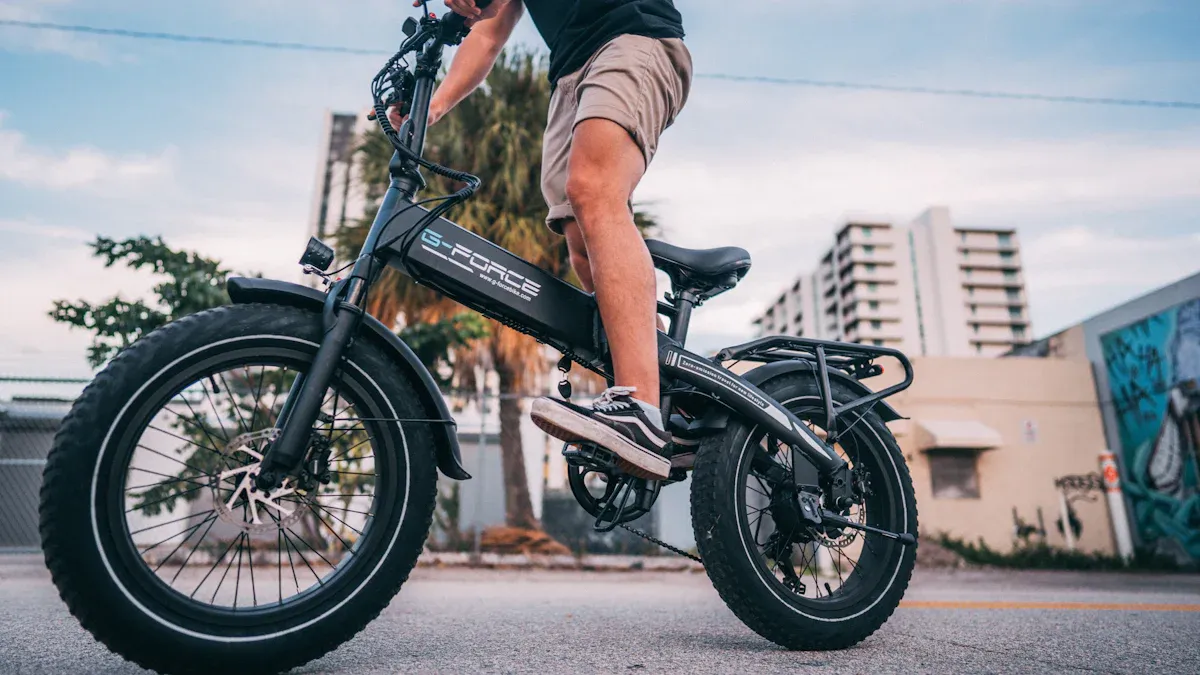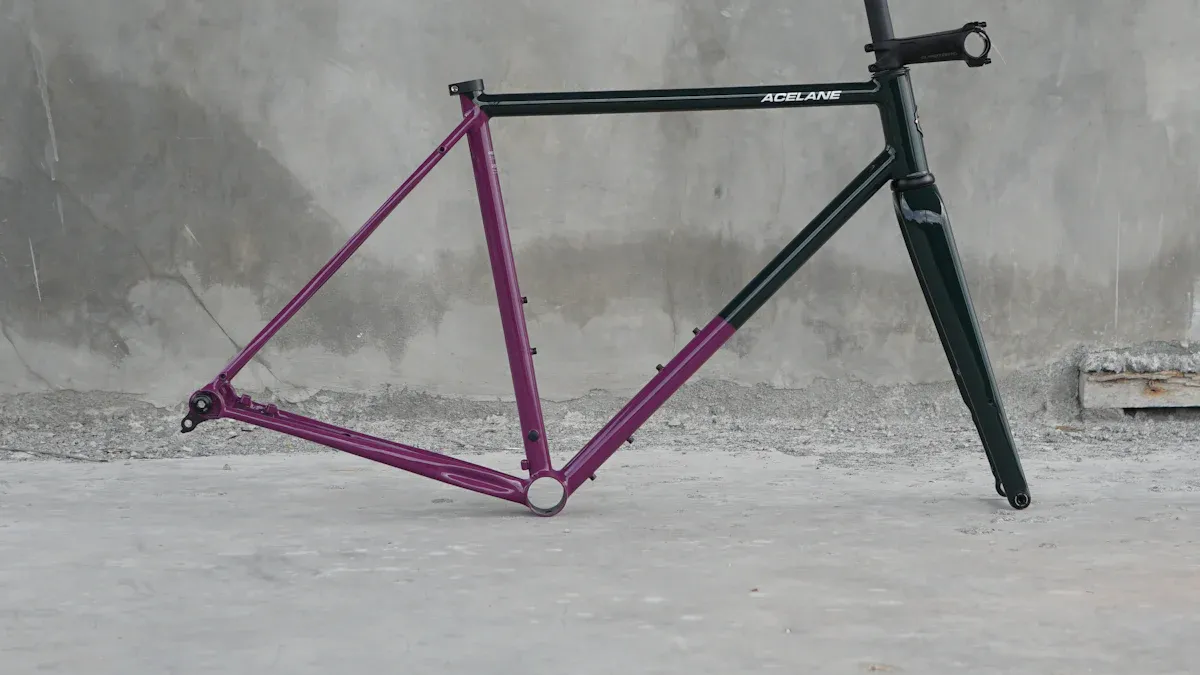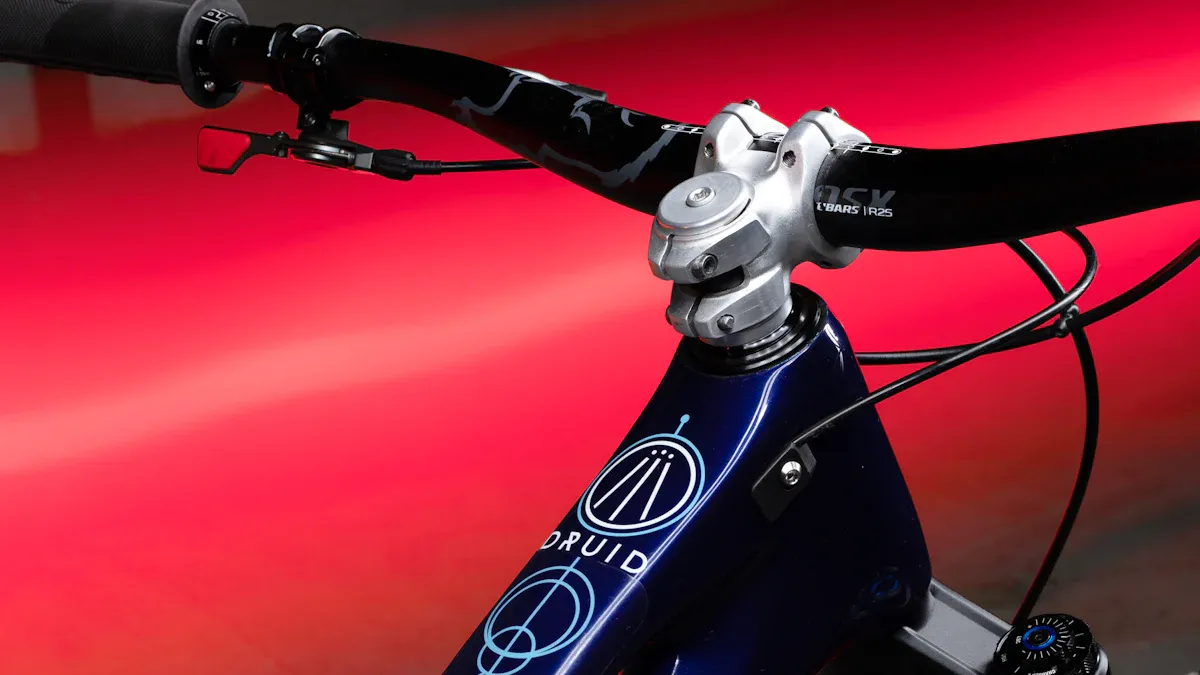
Customizing your e-mountain bike frame has many benefits. You can enhance performance by selecting parts that align with your riding style. Comfort is crucial when you adjust the fit of your e-mountain bike frame to suit your body. Personalizing your bike also allows you to express your unique style and preferences. By making these modifications, you transform your e-mountain bike frame into a true extension of yourself. Riding a bike that feels just right can significantly improve your experience on the trails.
Key Takeaways
Changing your e-mountain bike frame makes it work better. It also makes it more comfortable and shows your style.
Picking the right frame material and suspension system changes speed, handling, battery life, and comfort while riding.
Choose parts carefully, like frame design, wheels, and suspension. They should fit your riding style and the type of ground you ride on.
Taking care of your bike and making smart upgrades helps it run well and last longer.
Begin with easy changes like grips and paint. For big changes, get help from a pro to stay safe.
Why Customize?
Customizing your e-mountain bike frame can make your ride much better. Here’s how personalizing it can help with performance and comfort.
Performance Enhancements
When you change your e-mountain bike frame, you can make special adjustments for better performance. Here are some common reasons why people customize:
Improved Comfort and Performance: Many riders add comfy grips, special seat posts, and saddles that fit their body. These changes help reduce tiredness on long rides.
Maintenance and Sustainability: Upgrades like tough tires and better locks can lower repairs and boost security.
Personal Style Expression: Custom paint, stickers, and matching accessories let you show off your unique style.
Performance Improvements: Features like suspension forks and energy-saving brakes improve ride quality and efficiency.
Customizing your e-mountain bike frame can also change important performance factors. For example, a lighter carbon fiber frame can help you go faster by cutting down weight. The table below shows how different parts of frame customization affect performance:
Performance Metric | Frame Customization Aspect | Effect on E-Mountain Bike Performance |
|---|---|---|
Speed | Frame Material (Carbon Fiber vs Aluminum) | Carbon fiber frames are lighter and stronger, improving speed by reducing weight and enhancing strength compared to aluminum frames. |
Handling | Frame Material and Tire Selection | Lighter frames improve maneuverability; appropriate tires enhance traction and control, thus improving handling. |
Battery Efficiency | Frame Weight and Aerodynamics | Lighter frames reduce energy consumption; aerodynamic accessories reduce air resistance, improving battery efficiency. |
Comfort Improvements
Comfort is very important for a fun ride. Customizing your e-mountain bike frame can greatly improve how you feel while riding. Here are some ways personalization boosts comfort:
Geometry Adjustments: Custom frame shapes let you adjust the head angle and bottom bracket height. This change can fit different riding styles and terrains, making your ride more enjoyable.
Rider-Centric Design: Companies like Transition Bikes have created Speed Balanced Geometry (SBG) through lots of testing. This design helps with rider balance, front tire grip, and bike stability. Riders say they feel more centered on the bike, which improves control and cuts down on tiredness.
Aesthetic Personalization: Custom paint and stickers not only make the bike look better but also help you feel more connected to your ride. A bike that shows your style can boost your confidence on the trails.
Materials for E-Mountain Bike Frames

Picking the right material for your e-mountain bike frame is very important. It affects how well your bike performs, how long it lasts, and how comfortable it is. Different materials have their own good and bad points. Let’s look at some popular choices.
Frame Compatibility
When you choose a frame material, think about how it works with other parts of your e-bike. Here’s a list of common materials and how they fit together:
Frame Material | Compatibility Considerations | Pros | Cons |
|---|---|---|---|
Steel | Good for motor setups; allows small changes like dropout spreading | Strong, lasts long, flexible | Heavier than other options |
Aluminum | Not as flexible for bending; short lifespan; be careful with thin or old frames | Light, doesn’t rust | Can break under pressure, cracks easily, short lifespan |
Carbon Fiber | Can get crushed from clamping; hard to find hidden damage; can fail suddenly; not recommended for mid-drive motors without torque arms | Very light, strong in certain directions | Sensitive to clamping, hard to fix, warranty risks |
Great strength-to-weight ratio and doesn’t rust; costly and hard to change | Strong, rust-resistant, good ride feel | Expensive, not common, tough to modify |
Each material has its pros and cons. For instance, aluminum frames are popular because they are light and cheap, making up about 35.6% of sales in 2024. Carbon fiber is more costly but is becoming popular for its strength and performance.
Suspension Systems
The suspension system of your e-mountain bike is key to how the frame material works. Different designs like four-bar, virtual pivot point (VPP), and single-pivot systems have their own benefits.
Four-bar linkages help with small bumps and pedaling.
VPP systems give progressive resistance, great for tough riding.
Single-pivot designs focus on being simple and strong.
These systems need careful tuning to handle the extra power from electric motors. This tuning helps save energy and keeps traction. Materials like aircraft-grade aluminum alloys or carbon fiber composites are often used for their strength, lightness, and ability to reduce vibrations.
New improvements in full suspension e-bike frames, especially those made with carbon fiber, have made shock absorption and vibration control better. This helps reduce tiredness and makes rides more comfortable, especially on long or tricky trails. The mix of light materials and advanced suspension lets you take on tough trails with more confidence.
Customization Process

Customizing your e-mountain bike frame has many steps. You want to make sure each part you choose improves your ride. Here’s how to do the customization process well.
Choosing Components
Picking the right parts is very important for your e-bike’s performance and fit. Follow these steps to make smart choices:
Choose a Suitable Base Bike: Start with a strong e-mountain bike frame that works well.
Select an E-Bike Conversion Kit: Think about the motor type (hub or mid-drive), battery size, and controller fit.
Install the Motor: Take off the wheel and carefully put on the motor.
Install the Throttle: Put it on the handlebars for easy access and connect the cables securely.
Test the Setup: Turn on the battery, check voltage with a multi-meter, and make sure the throttle works smoothly.
Customize for Comfort and Style: Change the handlebars, grips, saddle, and lights. Add paint or stickers to show your style.
When picking parts, think about how they affect performance and fit. For example, the frame design can change rider comfort and power transfer. A step-thru frame makes it easy to get on, while a step-over frame gives more stiffness and power transfer.
Component | Key Variants | Impact on Performance and Fit | Rider Benefits |
|---|---|---|---|
Frame Design | Step-Thru, Mid-Step, Step-Over | Affects comfort and suitability for terrain | Easy access, balanced comfort, enhanced power transfer |
Frame Material | Aluminum, Carbon Fiber, Steel | Influences weight and durability | Lightweight, strong, smooth ride |
Wheels & Tires | Sizes (26″, 27.5″, 29″) | Affects stability and maneuverability | Improved grip and comfort |
Suspension | Front, Rear, Full Suspension | Absorbs shocks and enhances control | Smooth ride and adaptability |
Aesthetic Modifications
Aesthetic modifications let you personalize your e-mountain bike frame. Some popular options are:
Custom decals and paint jobs to hide scratches and add style.
Saddle upgrades, like gel covers or suspension seat posts, to improve comfort and look.
These changes can make your bike look better, but they might also affect resale value. Some upgrades can attract buyers, while too many personal changes might limit your market. Always think about how changes affect the bike’s overall appeal.
Avoid common mistakes when customizing. Don’t overload your bike with too many add-ons at once. Mixing parts that don’t work together can cause problems. Always check the bike’s manual for weight limits before making changes. Focus on modifications that improve comfort and function instead of just looks.
By carefully choosing parts and making smart aesthetic changes, you can create a custom electric bicycle that fits your needs and shows your style.
Maintenance Tips
Taking care of your custom e-mountain bike frame is very important. It helps keep your bike working well and lasting longer. Regular maintenance lets you find small problems before they become big ones. Here are some tips to keep your bike in great condition.
Upgrading Components
Upgrading parts can really improve how your e-bike performs. Here are some common upgrades and what they do:
Upgrade Type | Description | Benefits | Considerations / Downsides |
|---|---|---|---|
High-Modulus Carbon | Strong carbon fiber used in the frame to make it stiff but still flexible. | Makes the frame lighter by 100-200g; increases stiffness and responsiveness; improves ride feel. | Costs more (~$1000 extra); can be brittle if not mixed with softer carbon; may not be needed with other upgrades. |
Oversized Pulley System (OSP) | Bigger pulley wheels in the drivetrain to keep the chain straight and reduce friction. | Boosts power transfer by about 4 watts; makes the drivetrain last longer; smoother shifting. | Can be pricey ($250-$2000); small power gains; best as a later upgrade after cheaper options. |
High Engagement Rear Hubs | Rear hubs that engage quickly for instant power transfer. | Gets rid of ‘dead spots’ when pedaling; helps with climbing and quick starts. | Needs regular maintenance; can wear out the derailleur if the suspension compresses; can be noisy. |
These upgrades can make your ride better, but think about the costs and possible downsides before changing anything.
Keeping It in Shape
Regular checks are key to keeping your e-mountain bike in good shape. Follow this schedule to keep your bike running well:
Inspection Interval | Maintenance Task Description |
|---|---|
Weekly | Check tire pressure, look at brake pads, clean the frame and wheels |
Monthly | Lubricate the chain and gears, check battery level, inspect electrical connections |
Every 3-6 months | Get a professional tune-up at a bike shop, replace brake pads if needed, check hydraulic disc brakes and fluid |
Every 12 months | Look for damage or wear on the frame and wheels, replace the battery if needed |
Experts say to get a professional bike tune-up at least twice a year if you ride often. If you ride over 2,000 miles a year, consider getting tune-ups more often. Seasonal checks after bad weather are also important. Regular maintenance helps your bike frame and parts last longer. It makes your ride more efficient and enjoyable while helping you avoid expensive repairs.
By keeping your e-bike in good shape, you ensure a smooth, safe, and fun ride.
Changing your e-mountain bike frame can make riding more fun. You can make it better by picking the right parts and materials. New technology for e-bikes helps you customize your bike easily. Think about what you like and how you ride when you choose. Have fun making a bike that shows who you are. Start now, and feel the joy of riding a bike made just for you!
FAQ
What is the best material for an e-mountain bike frame?
The best material depends on what you need. Carbon fiber is light and strong. Aluminum is cheap and lasts long. Titanium is very strong for its weight but costs more.
How can I improve my bike’s comfort?
You can make your bike more comfortable by changing the frame shape, getting a better saddle, and using comfy grips. Adding suspension seat posts can help absorb bumps on rough trails.
How often should I maintain my e-mountain bike?
Check your tire pressure and brakes every week. Lubricate the chain and gears once a month. Get a professional tune-up every 3-6 months to keep it running well.
Can I customize my e-mountain bike myself?
Yes, you can customize your bike on your own. Start with simple upgrades like grips and saddles. For bigger changes, like modifying the frame, ask a professional for help to stay safe and make sure everything fits.
What are the benefits of a custom paint job?
A custom paint job makes your bike look better and shows off your style. It can also protect the frame from scratches and rust, helping it last longer.
See Also
Key Factors To Evaluate When Selecting An E-Mountain Frame
Professional Tips For Picking The Best Carbon Bike Frame
Determining The Ideal Bike Frame That Suits Your Needs
